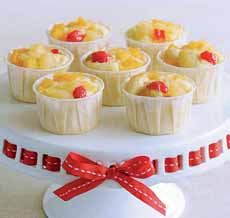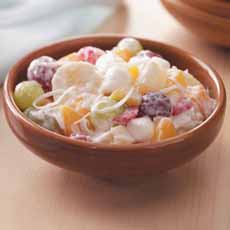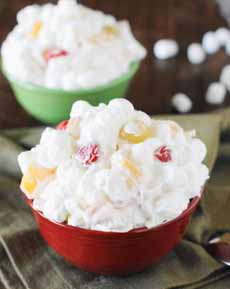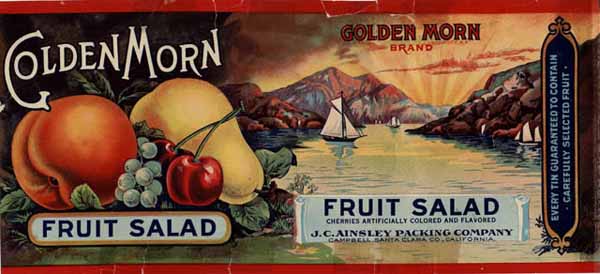FOOD 101: Fruit Cocktail History
|
May 13th is National Fruit Cocktail Day. We’re all familiar with cans of fruit cocktail from Del Monte, Dole and Libby’s. But who first created it, and why is it called “cocktail?” First: There is no alcohol in a conventional fruit cocktail. So why is it called fruit cocktail, instead of simply fruit salad? There’s a second definition of “cocktail,” as in shrimp cocktail: “An appetizer made by combining pieces of food, such as fruit or seafood.” However, the smart money says that when you’re selling canned fruit, “fruit cocktail” sounds more exciting than “mixed fruits.” While fruit cocktail is sold canned, it can be made fresh and served in a coupe glass or other stemmed glass, where it puns on an alcoholic cocktail. Serve fresh fruit salad in a stemmed glass, tossed with some Grand Marnier—one of our mother’s favorite preparations, garnished with a fresh mint leaf—and it’s even more so. The USDA actually stipulates the ingredients in canned fruit cocktail. It must contain grapes, peaches, and pineapples; optional maraschino cherries and other fruits are permitted. The percentages are dictated [source]: The difference between fruit cocktail and fruit salad is that the latter contains larger pieces of fruit, while fruit cocktail is diced into like-size pieces. Who first named this childhood delight? Well: According to ancient Greek philosopher Plato, necessity is the mother of invention. The canning industry generally agrees that fruit cocktail was developed as a way make use of the fruit scraps left when bruised or otherwise damaged fruits could not be used in canning. Fruit cocktail has been a staple of the canned fruit industry since at least the 1940s, and was one of the most popular products Del Monte produced at the plant, from 1941 until the plant’s closure in 1999. What company first came up with the mix of fruits, and named the result “fruit cocktail”, is not absolutely certain. Here are the contenders: |
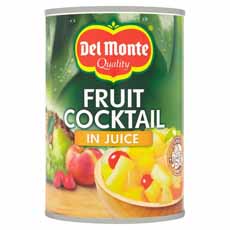 [1] Del Monte Fruit Cocktail, in the modern “no sugar added” recipe. You can still buy it in its original sugar syrup (photo courtesy Del Monte).
|
|
|
It may be that Herbert Gray or Del Monte read his recommendations in a trade article. Whomever the father of fruit cocktail may be, consumers were introduced to the product as a stylish dessert suitable for formal dinner parties and entertaining (source). In the 1930s, canned foods were appreciated for their convenience and did not have the “not as good as fresh” association that evolved in the 1970s, thanks to the proselytizing of Alice Waters and the evolution of “California cuisine.” Take your pick! We’re big on fresh fruits and vegetables, but we keep some cans of each in the pantry to use “in a pinch.” We admit to keeping canned pineapple chunks in case we run out of fresh melon for our morning cottage cheese or plain yogurt. And there’s always a can of no-sugar-added fruit cocktail for when we’re having a fruit attack, but have no fresh fruit. We took a quick survey and found that others we know use canned fruit cocktail:
|
||
